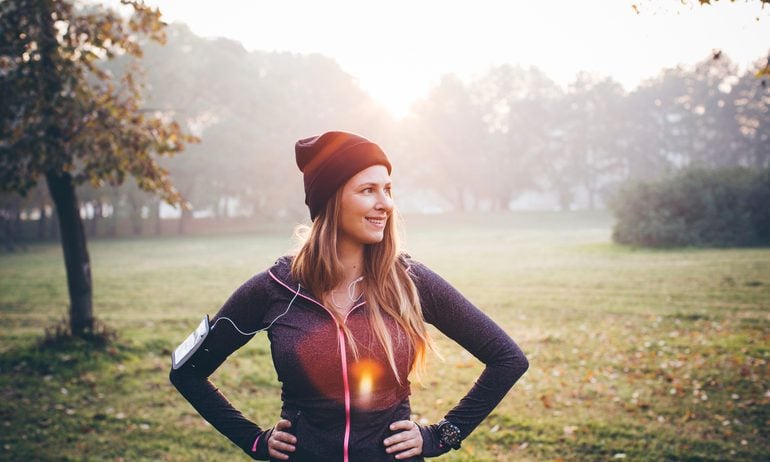Best Places to Practice Parkour

Many or all of the products on this page are from partners who compensate us when you click to or take an action on their website, but this does not influence our evaluations or ratings. Our opinions are our own.
1. College campuses
Colleges campuses make for excellent parkour training grounds for a number of reasons. Firstly, the space and architecture are usually diverse and interesting enough to allow for ample experimentation. On most campuses, you'll find enough rails, ramps, stairs and elevation changes to keep you occupied for a long while. Security will probably be fairly lax as long as you aren't doing anything too disruptive. They'll assume you're just another eccentric student (which may very well be true) and let you be. You'll also be a lot safer than if you were frolicking about the downtown area of a large metropolitan area.
2. Playgrounds
Playgrounds are basically designed for parkour. Unfortunately, they're usually child-sized, but with a little creativity, you can turn them into a adult-sized training facility. There are several advantages here. One, they are a public space (ignore the sign that says "Designed for children under 12"). Two, they have a unique set of equipment that is made for climbing and jumping. Three, they often have soft mulch or rubber underfoot, so if you screw up, you have safety cushion. The biggest drawback is obviously children. You don't want to trample kids or enrage their parents. Avoid practicing near kids whenever possible.
3. Beaches
The beauty of beaches resides in their mercy. Sand is a forgiving surface. You'll have a hard time finding climbable structures, but you have all the space you could ever need for flips and tricks. Don't forget the sunscreen. You may be more worried about leaving with all your bones intact, but sunburn isn't fun either.
4. Gym
For a more controlled, artificial environment (which, yes, sort of runs contrary to the philosophy of parkour), go to a gym. A place with mats, trampolines and balance beams is the safest and most effective place to hone your skills. If you slip up, you shouldn't get hurt too badly, and gym employees will be able to get quick medical attention. For novices, we actually recommend this route above all others. See what you're capable of before you take it to the streets.
5. Open field
Like the beach, an open field provides a great area to practice flips and rolls with a fairly soft surface underfoot.
6. Wheelchair ramps
Looking for sturdy rails? Wheelchair ramps are a great place to start.
7. Forests
Forests are another excellent public space. Trees come in many shapes and sizes, and a romp through the woods will always be somewhat unpredictable. Practicing in forests is a great way to improve your flow and improvisational skills. You can also use streams, bridges, logs and rocks as platforms and obstacles. Should you fall, the forest floor is a lot nicer than an alleyway.
How to maximize your rewards
You want a travel credit card that prioritizes what’s important to you. Here are some of the best travel credit cards of 2025:
Flexibility, point transfers and a large bonus: Chase Sapphire Preferred® Card
No annual fee: Wells Fargo Autograph® Card
Flat-rate travel rewards: Capital One Venture Rewards Credit Card
Bonus travel rewards and high-end perks: Chase Sapphire Reserve®
Luxury perks: The Platinum Card® from American Express
Business travelers: Ink Business Preferred® Credit Card
Chase Sapphire Preferred® Card
Travel
Dining
🔥 Huge highest-ever bonus on NerdWallet's 2025 Best All-Purpose Travel Rewards Card is back. Don't miss your rare chance to: Earn 100,000 points when you spend $5,000 on purchases in the first three months. That's worth at least $1,250 toward travel booked through Chase.

